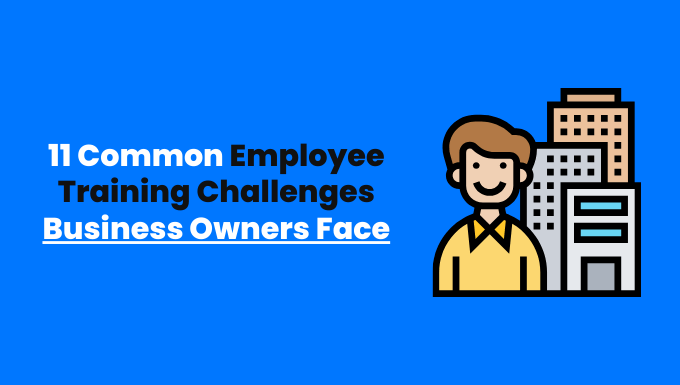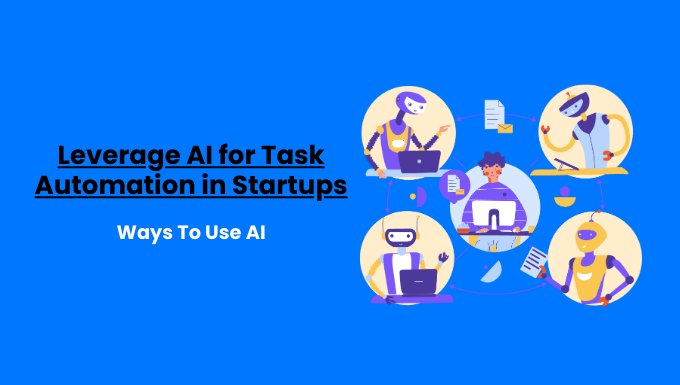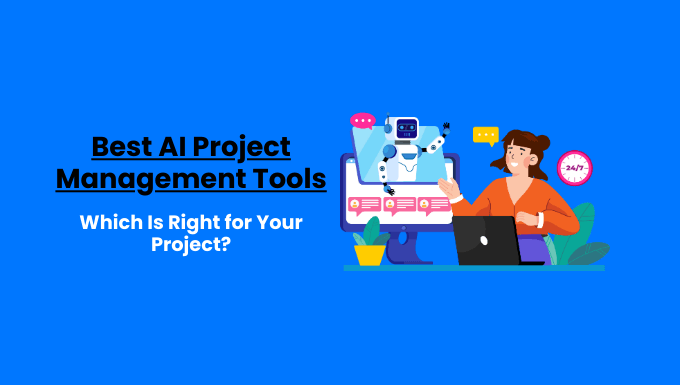Are employee training challenges holding your business back?
Imagine a workforce that’s skilled, motivated, and ready to tackle any obstacle.
That’s the power of effective training. But let’s face it, creating successful training programs isn’t easy.
From remote work hurdles to budget constraints, the path to employee development is riddled with roadblocks.
Discover how to overcome these common employee training challenges and unlock your team’s full potential.
Key Takeaways:
- Embrace digital tools to tackle remote working challenges and enhance training accessibility.
- Diversify training formats to cater to different learning styles and boost engagement.
- Implement cost-effective solutions like online courses to maximize training impact on a budget.
- Encourage feedback and active participation to continuously improve training programs.
- Invest in employee development to attract top talent, boost productivity, and gain a competitive edge.

Contents
ToggleThis article delves into the common obstacles faced by employers in fostering a skilled and knowledgeable team, highlighting the key areas where the focus is essential for optimal training outcomes, including the application of traditional learning methods and contextual learning to enhance memory retention.
11 Employee Training Challenges for Business Owners During Training

1. Remote Working Challenges
Embracing digital tools like Zoom for live training sessions and learning management systems can bridge the gap caused by remote work, making training accessible right at employees’ fingertips, and enhancing the success of your training.
2. Resistance to Change
Highlighting the benefits of change and providing consistent support can help employees navigate through transitions smoothly, showcasing a method to overcome training challenges faced during periods of significant change.
Offering resources and individual coaching sessions can empower employees to embrace change positively.
3. Tackling Training Costs
Investing in cost-effective training options like online courses or in-house programs can yield significant returns, enhancing employee skills without breaking the bank and addressing some of the training challenges faced by organizations.
4. Catering to Different Learning Styles
Diversifying training formats with videos, reading materials, and interactive quizzes ensures that employees with varying learning preferences can engage effectively, creating a personalized learning experience.
5. Craving Employee Feedback
Encouraging feedback through surveys and chats empowers employees to contribute their insights, enabling businesses to refine and optimize training programs for maximum impact and foster a traditional learning environment adapted to modern needs.
6. Time Constraints
Providing flexible training options such as online courses accessible 24/7 accommodates employees’ busy schedules, allowing them to engage in learning at their convenience.
7. Ensuring Training Standardization
Centralizing training materials on a unified platform maintains consistency and quality across all training initiatives, ensuring a standardized learning experience for all employees.
8. Budget Limitations
Exploring online learning platforms for cost-effective training solutions offers a wide range of courses at a fraction of traditional training costs, maximizing the value of training investments and introducing employees to new skills.
9. Diversity of Cultures in the Global Workforce
Addressing cultural diversity through multilingual training, cultural sensitivity programs, and culturally appropriate materials fosters an inclusive learning environment where all employees feel respected and valued.
10. Revamping Training Methods
Revitalize training sessions by incorporating interactive elements such as hands-on activities and gamified experiences, enhancing engagement and knowledge retention among employees, which are tactics to help your employees feel more connected and involved.
11. Boosting Trainee Participation
Encouraging active participation by making training relevant to employees’ roles and recognizing and rewarding their engagement fosters a culture of continuous learning and development within the organization.
Why Business Owners Should Invest in Employee Training Programs
- Attract and Retain Top Talent: Picture having a team of skilled professionals who are not only talented but also driven to excel in their roles. By investing in employee training programs that include feedback surveys and video conferencing tools, you can attract new talent and retain your current employees across various locations. Who wouldn’t want to work for a company that prioritizes its growth and development, especially through reskilling and adapting training to employees’ needs, thereby aligning with the principles of traditional learning to ensure a comprehensive development pathway?
- Opportunities for Advancement: When you invest in training your employees, you’re not just helping them enhance their skills; you’re also cultivating a pool of candidates ready for future promotions, mitigating the biggest employee training challenges. Trained employees are more likely to be considered for advancement, having already showcased their competence and dedication through their training efforts, marking the success of upskilling programs.
- Boosted Employee Engagement: Employee engagement is the secret ingredient for a thriving workplace. Training programs can elevate employee engagement by demonstrating to your team that you value their professional growth, which is a pivotal component of the effectiveness of your training. Engaged employees are typically more motivated, productive, and committed to their work; a win-win scenario for all.
Strategies for Employee Retention
To keep your employees content and motivated, consider implementing strategies such as offering competitive salaries, providing flexible work schedules, promoting work-life balance, recognizing and rewarding their efforts, and fostering a positive company culture that employees want to be a part of.
Competitive Edge
In today’s dynamic business landscape, staying ahead of the competition is crucial, often requiring successful training and upskilling strategies, indicating the significance of overcoming training challenges faced by the L&D team.
Investing in employee training can provide your company with a competitive edge by developing the skills and knowledge of your workforce, promoting a culture of continuous learning and improvement, and positioning your organization as a leader in your industry.
Enhanced Operational Quality
Quality isn’t just a goal; it’s a mindset that requires a continuous effort to reskill and upskill, ensuring all team members have the actionable information they need.
By training and engaging your employees, you empower them to identify areas for improvement, innovate, and strive for excellence in all they do, which is the foundation of a robust learning culture.
This focus on quality and efficiency can lead to operational excellence and differentiate your company from others, highlighting the effectiveness of your training and its role in fostering a learning culture.
Improved Teamwork and Collaboration
Effective teamwork and collaboration are vital for success in any organization, pointing towards the necessity to continuously reskill and upskill team members.
When your employees have the right skills, knowledge, and tools, they can collaborate more efficiently and harmoniously, a goal every training manager strives for, emphasizing the need for continuous employee development to maintain team cohesion.
Investing in training can enhance teamwork, foster collaboration, and drive collective success within your team, clearly illustrating how tackling training challenges faced by the L&D team can lead to organizational growth.
Engaging Learners Throughout the Training Process
Engaging learners during training is akin to keeping a goldfish’s attention span in a sea of distractions.
Here’s how to ensure your learners stay hooked: make your training interactive and relevant to the real-world challenges they face, thereby enhancing the success of your training programs and keeping employees away from disengagement.
- Clear Learning Goals: Just like trying to assemble IKEA furniture without instructions leads to chaos, learners need clear goals to know where they’re headed and benefit from LinkedIn’s insights, along with memory retention techniques to ensure a smooth learning journey.
Make sure they grasp what’s expected, like explaining TikTok to your grandma in a language she understands and leveraging soft skills for effective communication. - Convenient Learning: Imagine wanting to binge-watch your favorite show, but it’s only available on VHS, highlighting the need for digital adoption in every aspect of life, including employee development.
An outdated system can kill the vibe and highlight the effects of ineffective training infrastructure, underscoring the gap between training that doesn’t meet employees who aren’t engaging and the urgent need for digital transformation.
Invest in a quality Learning Management System (LMS) for accessible learning anytime, anywhere; think of it as Netflix for knowledge and a cornerstone of your training and development strategy. - Motivation Galore: Would you rather watch Paint dry or participate in a virtual escape room featuring on-demand tasks and micro-learning opportunities?
Exactly. Use simulations, case studies, and real-life scenarios to keep learners engaged, incorporating methods like gamification and short videos to cater to the learning culture of almost half the workforce who prefers engaging content.
It’s like turning learning into a game of “Who Wants to be a Millionaire,” minus the dramatic music.
Strategies to Increase Employee Engagement and Retention During Training
Keeping employees engaged during training is like trying to bathe a cat; it is challenging but not impossible, reflecting one of the unique training challenges faced by the L&D team, especially when ensuring training is integrated into the flow of work.
Here’s how to prevent your employees from slipping through the cracks: incorporate feedback surveys as a regular part of your training programs to gauge satisfaction and areas for improvement, preventing employees away from feeling unnoticed.
- Competitive Compensation: Imagine working hard and getting paid in Monopoly money.
Proper compensation is crucial to keeping employees content. Pay them what they deserve, or they’ll update their resumes faster than you can say “salary negotiation.” - Ongoing Development: Would you prefer a company that invests in your growth or one that treats you like a disposable coffee cup?
It’s about keeping the feeling of being undervalued by employees away.
Offer mentorship programs, workshops, and access to online learning platforms to keep employees engaged and motivated, which is essential in creating employee enthusiasm for training and development opportunities.
It’s like providing them with a career GPS to navigate towards success, ensuring that learning ensures their development aligns with the organization’s goals through traditional learning frameworks, and keeping career uncertainty at employees away. - Structured Training: Imagine trying to bake a cake without a recipe; a disaster waiting to happen, just like neglecting the needs of a dispersed workforce without digital transformation strategies can push employees away.
Use a structured framework to guide the training process, ensuring employees receive comprehensive training covering all necessary ingredients for success and integrating it into the flow of work through micro-learning.
Creating Interactive and Effective Training Sessions
Making training sessions interactive is like adding sprinkles to a cupcake, it enhances the experience and keeps boredom for employees away.
Here’s how to spice up your training sessions:
- Interactive Elements: Think of each slide as a blank canvas awaiting a pop of color.
Add interactive elements to keep learners engaged, turning a dull lecture into a fun game of Jeopardy and effectively combating ineffective training methods with on-demand content. - Digital Storytelling: Stories have a magical way of capturing attention, especially when aligned with the employees’ needs through LinkedIn’s learning resources.
Incorporate digital storytelling into your courses to make learning more engaging and memorable, transforming training sessions into blockbuster movies; minus the popcorn and adding webinars for deeper learning. - Simulated Environments: Providing a safe space for learners to practice is like giving them a playground to explore, a technique often adopted in modern development programs to instill new skills through contextual learning.
Let them make mistakes and learn in a simulated environment, akin to learning to ride a bike with training wheels; minus the scraped knees, to foster a safe space for growth and emphasize that making mistakes is a natural step in the training and development process.
Utilizing Technology to Capture Employee Attention
Technology is the fairy godmother of employee engagement and wields its magic to keep employees hooked and bridge training gaps.
Here’s how to use tech effectively: introduce webinars as part of your training modules, guided by an experienced trainer.
- Special Features: Imagine having a Swiss Army knife but only using the toothpick. It’s like having access to various training methods, such as gamification and short videos, but not utilizing them.
Utilize special features in internal communication tools to drive employee awareness and engagement, unlocking hidden levels in a video game with rewards of increased productivity. - Engage Virtual Teams: With remote work on the rise, technology is the glue holding virtual teams together, emphasizing the importance of a trainer in virtual settings.
Use tech to facilitate effective communication and engagement with all team members, hosting a virtual team-building retreat without the awkward trust falls, a technique that underscores the importance of digital adoption in fostering employee development. - Foster Innovation: Encourage fresh thinking and innovation by using online forums and intranet platforms to spark creativity and support employees across different departments through video conferencing tools.
Pose thought-provoking questions and form cross-functional teams to brainstorm ideas, turning your workplace into a think tank where ideas flow endlessly.
Types of Workplace Training Programs for Employees
In the dynamic realm of business, employee training stands as a cornerstone for success, underscoring the importance of upskilling employees.
Whether you’re a seasoned entrepreneur aiming to enhance your team’s skills or a budding business enthusiast eager to navigate the intricacies of the corporate world, delving into the array of workplace training programs is paramount.
Let’s embark on a journey through the realm of employee training and uncover pivotal programs that can propel your team to new heights, focusing on soft skills, upskilling, and development programs.
1. Onboarding Training: Paving the Path to Triumph
Imagine a fresh recruit stepping into your organization, brimming with enthusiasm yet slightly bewildered.
Enter onboarding training, the superhero cape for new employees, guiding them through the nuances of their roles, acclimating them to the company culture, and fostering a seamless transition, a critical component of development programs.
Take Zapier, a Software as a Service (SaaS) company, for instance, where the training manager has implemented development programs that excel beyond traditional methods, proving that tailoring the training to your team can lead to significant improvements in employee productivity.
Their onboarding process is akin to a well-oiled machine, embodying best practices in training new employees.
New hires spend their initial week immersing in the company ethos, building rapport with their team, and getting upskilled on best practices.
By the third week, they are already deeply engaged in cross-functional projects, making tangible contributions right from the start, overcoming the lack of time and training gaps efficiently through the implementation of feedback surveys and contextual learning strategies.
2. Compliance Training: Upholding Legal and Ethical Standards
No one desires to find themselves on the wrong side of the law, correct? Keeping employees away from legal pitfalls is essential.
This highlights the importance of continuous training and the integration of learning to ensure employees are always up to date with the latest regulations.
This underscores the importance of continuous legal education and the need to reskill and upskill to ensure compliance.
Herein lies the significance of compliance training, ensuring that employees possess a comprehensive understanding of the legal, ethical, and policy-related facets of their roles, a core component of employee development.
It serves as a crash course in navigating the regulatory landscape with finesse, addressing some of the biggest employee training challenges.
Consider information security training as a prime illustration of the necessity for ongoing retraining to address evolving threats and ensure digital adoption securely, making cyber-awareness part of our learning culture.
This program educates employees on the intricacies of cybersecurity, safe internet practices, and adept data handling, both within the workplace and beyond, ensuring they have the information they need to prevent breaches.
3. Technical Training: Mastering the Tools of the Trade
When it comes to delving into the technical intricacies of a role, technical training emerges as the beacon of knowledge, solidifying why training is essential for preparing employees for their duties.
This program equips employees with the requisite skills and expertise to adeptly handle the technical aspects of their positions with finesse, showcasing the effectiveness of your training.
Traditional educational programs and degree courses exemplify technical training, but integrating enterprise software as training software can modernize and enhance learning outcomes, promoting memory retention and contextual learning.
Universities, colleges, and vocational schools proffer these programs to empower employees to enhance their technical acumen and excel in their respective fields, contributing significantly to comprehensive employee development.
4. Product Training: Profound Understanding for Profound Results
Ever found yourself tongue-tied while elucidating a product to a customer?
This could stem from a misunderstanding, underscoring the need for effective training using methods like gamification.
Enter product training, delving deep into a company’s products or services to ensure employees possess the prowess to articulate the value propositions with confidence.
Imagine a company utilizing simulations or test drives for product training in sales.
This hands-on approach enables sales representatives to experience the product firsthand, facilitating seamless communication of its benefits to potential customers and helping to eliminate any misunderstanding about its features.
5. Sales Training: Mastering the Art of Deal Closure
Sales representatives serve as the frontline warriors of any business, and equipping them with top-notch sales training can be a game-changer, drastically reducing turnover and keeping valuable employees away from the exit door.
This program refines their skills in relationship-building, negotiation tactics, deal-closing strategies, and a comprehensive understanding of customer needs, aiming to reskill and upskill employees in key areas.
Role-playing exercises form a cornerstone of sales training.
Envision sales reps immersing themselves in diverse scenarios, honing their pitch, and refining their selling skills within a supportive environment that emphasizes reskilling and the use of enterprise software.
People Also Asked
1. How can critical thinking be incorporated into employee training programs?
Enhancing critical thinking skills in the workplace through employee training programs is crucial for boosting employee productivity and encouraging memory retention, keeping stagnation employees away.
Here are some effective strategies to incorporate critical thinking into training:
- Critical Thinking Roadmap: Break down critical thinking into four phases – executing, synthesizing, recommending, and generating, a method introduced by our training manager to enhance new skills and foster a learning culture. This roadmap acts as a step-by-step guide to sharpen critical thinking skills.
- Mindful Observation and Active Listening: Encourage employees to practice mindful observation and active listening to evaluate information effectively and tackle complex problems with ease, keeping miscommunication and errors at employees away.
- Asking Questions and Assessing Evidence: Foster a culture of asking questions and assessing evidence to draw sound conclusions and manage biases effectively, a fundamental practice in the best training environments.
- Specific Instruction and Guidance: Provide personalized instruction and guidance tailored to each employee’s needs to enhance their critical thinking skills effectively, a challenge that training may address.
- Customized Training: Customize training based on individual roles to make learning engaging and relevant, similar to a bespoke suit tailored for success, which is often seen as the best training approach for employee development.
- Coaching Routine: Implement regular coaching sessions focused on tasks requiring critical thinking to nurture employees’ skills effectively.
2. How do you introduce employee training innovation without resistance?
Introducing training innovation without facing resistance from employees can be challenging, especially when there is a necessity to retrain and ensure digital adoption across the enterprise, focusing on the employees’ needs and reskilling.
Here are strategies to make the transition smoother:
- Clear Communication: Communicate the reasons behind the change clearly to address employees’ concerns and fears upfront, utilizing video conferencing to facilitate open and effective dialogue.
- Training and Support: Offer comprehensive training programs and ongoing support to boost employees’ confidence with new technology, tackling common training challenges head-on and integrating micro-learning to suit the flow of work.
- Innovation Training: Equip employees with knowledge of innovation theories, frameworks, and techniques to empower them to embrace change and drive innovation, a testament to successful training.
- Customized Training: Provide a mix of online resources and group training sessions to cater to different learning preferences effectively, ensuring employees are away from one-size-fits-all solutions.
- Engaging Training Methods: Engage employees with effective communication and interactive training methods to minimize resistance and make learning fun and interactive.
3. Would you take a pay cut to keep working remotely?
According to a study by Good Hire, 61% of respondents would be willing to take a pay cut to continue working remotely, indicating a shift in priorities that may affect employee turnover rates and underscores the importance of video conferencing in maintaining connectivity with employees across different locations.
The decision to trade a higher salary for remote work varies based on individual priorities, reflecting personal preferences and circumstances, an option more employees may consider with effective training.







